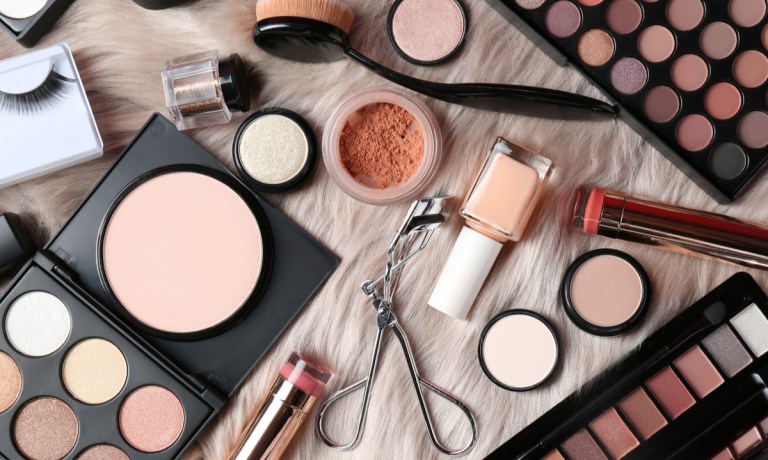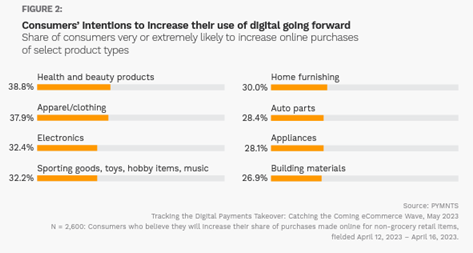
Sector brands and merchants may need to refine their digital approach to gain customer share as consumers seeking to bring beauty to their doorstep.
Moving away from traditional makeup counters and drugstore shelves, consumers are increasingly making their health and beauty product purchases online. This change is noted in PYMNTS’ collaboration with Amazon Web Services, “Tracking the Digital Payments Takeover: Catching the Coming eCommerce Wave.”

Here, 39% of surveyed consumers say they are very or extremely likely to increase their online purchases of health and beauty products. This represents a significant slice of consumers increasing their spend across digital platforms — and, in an economy where consumers have been cutting back wherever possible, this increased digital spend is likely to pull at least partially from in-store spend.
It is difficult to know exactly what is driving this move, but one possibility may be discount-seeking as consumers compare merchant price points. Another could be the convenience of a greater variety of items available for purchase than may be found in-store, where shelf space is generally at a premium and competition is fierce.
Given these constraints, manufacturers may limit in-store product offerings to their most popular products and reserve lesser selling items for eCommerce only. They also may seek to bring certain key experiences with the products online, such as augmenting the local drugstore nail polish section with a much larger group of colors that are online-only, or mailing samples of related products with purchases to give shoppers the chance to discover a new favorite.
Whatever the reason behind this shift in consumer behavior, merchants and brands offering beauty and health products may have little choice but to increase their online and digital capabilities in order to remain competitive.
In a PYMNTS interview, American Express Vice President of U.S. Merchant Marketing Tessa R. Dooley explains the need for sector players to embrace technological tools to grow their market share. “The [beauty] industry as a whole is on track for a full recovery, and if you look long term, a lot of this shift is being driven by a permanent shift in consumer behaviors towards digital channels. … [Businesses] need to harness this wealth of data and analytics and feedback that’s newly available to them in order to find ways they can make better business decisions that help reach new segments and drive loyalty.”
Major sector players are already positioning themselves for profitability in the consumer behavioral shift to mostly purchasing health and beauty products online. Brands and merchants seeking to successfully compete may focus on refining their own individual path to digital growth to hopefully stake their own claim on this growing share of eCommerce spend.